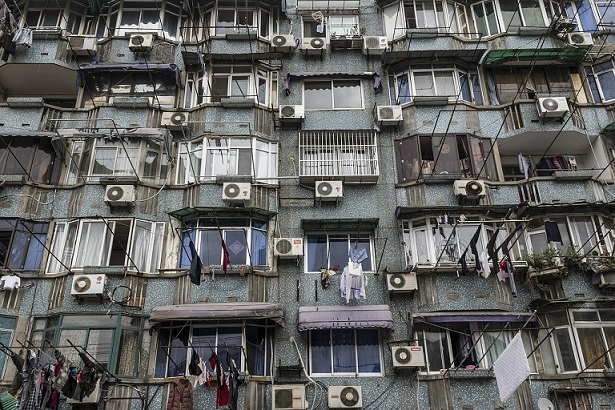China has given the clearest indication yet that it is
planning to promote natural substitutes for HCFCs at the expense of HFCs, after
publishing a list of ‘recommended substitutes for HCFCs’ featuring over 80%
natural products.
According to market intelligence firm CCM, the publication of the list is
likely to be followed by more substantial policies promoting natural
refrigerants, detergents and foaming agents over the coming years.

Details of
the policy
The First
Catalogue of Recommended Substitutes for HCFCs was published on June 5 by
China’s Foreign Economic Cooperation Office, Ministry of Environmental
Protection (FECO).
FECO officials announced that the Catalogue was the product of extensive research into policies to
transition away from HCFCs and fulfil China’s obligations under the Montreal
Protocol. The government is currently soliciting public opinion on the Catalogue and will continue to collect
opinions from stakeholders until June 30.
Of the twelve substitutes included in the Catalogue, ten are natural chemicals and
only one is an HFC, a clear indication of the government’s mindset as China
begins the move towards eliminating HCFCs.
First Catalogue of Recommended Substitutes
for HCFCs (exposure draft), 2015
|
HCFC |
Application |
Substitute |
ODP (ozone depletion potential) |
GWP (global warming potential) |
Target field |
|
HCFC-22 |
Refrigerant |
R290 (propane) |
0 |
3.3 |
Room air conditioner; Commercial
independent refrigeration system |
|
HCFC-22 |
Refrigerant |
R600a
(isobutane) |
0 |
3 |
Commercial
independent refrigeration system |
|
HCFC-22 |
Refrigerant |
CO2 (carbon
dioxide) |
0 |
1 |
Household
heat pump water heater; Industrial/commercial
heat pump water heater; Vehicle
air conditioner; Industrial/commercial
freezing and refrigeration system (used as refrigerant and secondary
refrigerant) |
|
HCFC-22 |
Refrigerant |
NH3
(ammonia) |
0 |
0 |
Refrigerated
warehouse; Transport
refrigeration; Condensing
unit; Industrial
refrigeration system |
|
HCFC-22 |
Refrigerant |
HFC-32 (difluoromethane) |
0 |
675 |
Unitary
air conditioner; Water
chilling (heat pump) unit; Heat pump
water heater; Condensing
unit |
|
HCFC-22
and HCFC-142b |
Foaming
agent |
CO2
(carbon dioxide) |
0 |
1 |
Extrusion polystyrene
foam |
|
HCFC-141b |
Foaming
agent |
Cyclopentane,
n-pentane and isopentane |
0 |
11 |
Insulating
materials for small appliance; Non-spraying
foam for refrigerated container, solar panel and refrigerated warehouse |
|
HCFC-141b |
Foaming
agent |
H2O |
0 |
0 |
Insulating
materials for pipeline; Materials
for solar panel |
|
HCFC-141b |
Detergent |
Hydrocarbon
detergent |
0 |
25 |
Disposable
injection needle; Disposable
inoculator; Five
metals (gold, silver, copper, iron and tin) |
|
HCFC-141b |
Detergent |
Water-based
detergent |
0 |
0 |
Liquid crystal
display; Electronic
circuit board |
|
HCFC-141b |
Detergent |
Trans-dichloroethylene |
0 |
240 |
Five
metals; Electronic
circuit board |
|
HCFC-141b |
Detergent |
Isopropanol |
0 |
10 |
Liquid
crystal display |
The Catalogue is
intended to be merely a general indication of the Chinese government’s
intentions and will not include any practical policies to support natural
substitutes for HCFCs.
However, recent history suggests that more practical
measures are likely to follow in the near future. When China announced that it
intended to promote R290 as a replacement for R22 in domestic air conditioners
in 2012, several supportive policies were introduced soon after, including an
agreement to help air conditioner manufacturers overhaul their production lines
in 2013, new subsidies for the production and marketing of air conditioners
using R290 from 2014, and the introduction of a new ‘Environmental Protection
and Low Carbon Label’ in 2015 to encourage consumers to choose green air
conditioners.
The policies have proved to be very effective, with
Gree Electric Appliances and Haier Group – two of China’s leading air
conditioner manufacturers – announcing the launch of new R290 products this
year.
Considering the scale of investment needed for
production overhauls, product re-designs and overcoming various technical
difficulties such as increased flammability of R290 air conditioners, making
this transition in just three years is an impressive achievement.
A knockout
blow for China’s HFC industry?
The presence of only one HFC in the Catalogue will be a severe blow to China’s
already-struggling HFC industry.
HFCs have made solid progress in the Chinese market as
substitutes for HCFCs – HFC-134a currently
dominate the vehicle air conditioner market, HFC-410a use has
almost surpassed that of HCFCs in domestic air conditioners, and HFCs also have
a significant presence in the foaming agents and detergents markets.
However, severe overcapacity has made life
increasingly difficult for producers. In the HFC-134a
industry, for example, operating rates have fallen over 30% since 2012 and are
currently under 50%, while prices have fallen by 300% over the same period,
according to CCM’s research.
The only route out of this situation for the HFC
industry is through increasing demand, but this will be very difficult
following the publication of the Catalogue.
With the full weight of government support behind
them, natural refrigerants, detergents and foaming agents are likely to
increase their market share in China substantially over the next few years.
CCM will
publish further news, data and analysis of China’s transition from HCFCs in
E-Journal, our real-time intelligence service for China’s fluoride materials
market. You can claim two months of free access to E-Journal by registering for
a free trial here: http://www.cnchemicals.com/Special/SPFreeTrial.aspx
For more
information about CCM and our coverage of China’s chemicals market, please
visit www.cnchemicals.com or get in
touch with us directly by emailing econtact@cnchemicals.com or calling + 86-20-37616606.
-
Average:5
-
Reads(5005)
-
Permalink


 Back to Cnchemicals.com
Back to Cnchemicals.com 